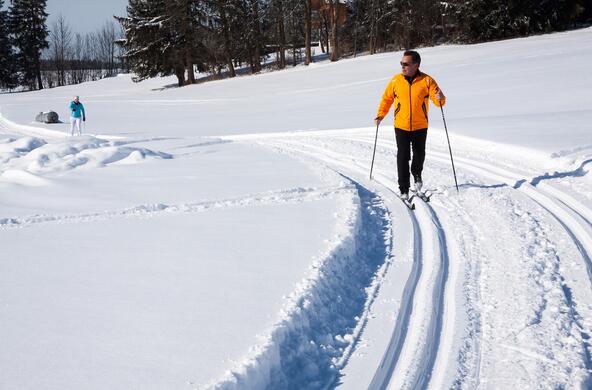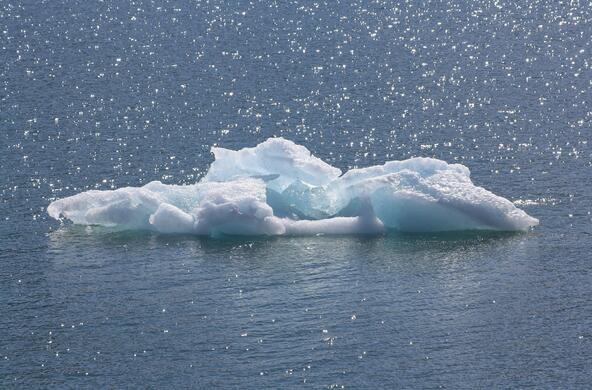Undoubtedly when 1816 unfolded as “The Year Without A Summer” there was widespread anxiety among farmers. Crop failures were global. Half-a-world away, the explosive eruption of the Tambora volcano in 1815 had injected a vast amount of sulfur dioxide and volcanic ash into the stratosphere, causing spectacular sunsets and a cooler planet for a couple of years. (See: The artistic record of nature). Now we recognize that periodic explosive eruptions of volcanoes are a major source of variability in Earth’s climate.
Large volcanoes are a source of particles known as aerosols in the stratosphere, where they reflect incoming solar radiation back to space. Particles of sulfate are particularly effective, but volcanoes are not the only source of aerosols. High elevation cirrus clouds and jet contrails are also known to cool the planet, by providing reflective ice particles in the stratosphere. (See: Riding contrails to our future).
Normally, the only source of sulfur in the stratosphere stems from a gas known as carbonyl sulfide (COS), which is produced naturally by a variety of processes on Earth’s surface. Carbonyl sulfide mixes upward and is oxidized in the stratosphere, producing sulfate aerosols, which reflect incoming solar radiation. At 20 to 25 km altitude, these aerosols are a predictable factor determining Earth’s climate.
Sulfate aerosols also derive from sulfur dioxide in explosive volcanic eruptions that have enough force to drive volcanic ash and gases in the stratosphere. Thus, Tambora, Krakatoa, Mount Pinatubo, and other large volcanoes are noteworthy for the several years of cooler climate that they caused worldwide.
The observation that particles—ice crystals, sulfate aerosols, and volcanic ash—in the stratosphere cool the Earth has stimulated interest among those to suggest that we might engineer Earth’s climate, rather than simply wait to suffer the consequences of global warming. A small fleet of rockets could deliver sulfate and other particles to the stratosphere, where they would reflect incoming solar radiation for a few years, before themselves falling back to Earth’s surface under gravity.
Geoengineering climate garners support among those who have abandoned all hope that we will ever cut our emissions of “greenhouse” gases from fossil fuel combustion. As an alternative, they recommend that we take an active role in stabilizing Earth’s climate in the face of rising concentrations of greenhouse gases. Even the late Ralph Cicerone, then president of the National Academy of Sciences, suggested that we should pursue some research on this notion.
Scientific investigation is always advised, but experience suggests some caution in the application of geoengineering of our planet. Some investigators suggest that sulfate aerosols might stimulate the depletion of the stratospheric ozone layer, just now beginning to heal following the abandonment of use of chlorofluorocarbons (CFCs) in refrigerants. As an alternative, others suggest that we focus on aerosols made from common rock minerals, such as might be injected into the stratosphere in volcanic ash. These would be less likely to deplete ozone.
All attempts to seed aerosols into the stratosphere are fraught with the difficulty of maintaining the particles aloft. The mean residence time of stratospheric air is about 2.6 years. When a large volcano erupts, its effects on climate diminish rapidly. We can expect the same for sulfate and mineral particles carried to the stratosphere in rockets. Once started, we’d have to keep transporting new particles into the stratosphere if we hope to avoid an abrupt return to a much warmer planet.
As a global change scientist, I support investigations of these ideas, but my long experience with environmental matters suggests caution with large-scale attempts to manipulate nature on our behalf. Our track record at this is not great and the “unknown unknowns” always seem to come back to bite us.
References
Briffa, K.R., P.D. Jones, F.H. Schweingruber and T.J. Osborn. 1998. Influence of volcanic eruptions on Northern Hemisphere summer temperature over the past 600 years. Nature 393: 450-455.
Keith, D.W., D.K. Weisenstein, J.A. Dykema and F.N. Keutsch. 2016. Stratospheric solar geoengineering without ozone loss. Proceedings of the National Academy of Sciences 113: 14910-14914.
MacMartin, D.G., B. Kravitz, J.C.S. Long, and P.J. Rasch. 2016. Geoengineering with stratospheric aerosols: What do we not know after a decade of research? Earth’s Future 4: 543-548.
McCusker, K.E., K.C. Armour, C.M. Bitz, and D.S. Battisti. 2014. Rapid and extensive warming following cessation of solar radiation management. Environmental Research Letters 9: doi: 10.1088/1748-9326/9/2/024005
Rasch, P.J., S. Tilmes, R.P. Turco, A. Robock, L. Oman, C.C. Chen, G.L. Stenchikov, and R.R. Garcia. 2008. An overview of geoengineering of climate using stratospheric sulphate aerosols. Philosophical Transactions of the Royal Society—A. Mathematical, Physical and Engineering Sciences 366: 4007-4037.
Schlesinger, W.H. and E.S. Bernhardt. 2013. Biogeochemistry: An analysis of global change. 3rd ed. Academic/Elsevier, San Diego.
Sigl, M. and 23 others. 2015. Timing and climate forcing of volcanic eruptions for the past 2,500 years. Nature 523: 543-549.
Zerefos, C.S. and 9 others. 2014. Further evidence of important environmental information content in red-to-green ratios as depicted in paintings by great masters. Atmospheric Chemistry and Physics 14: 2987-3015.







